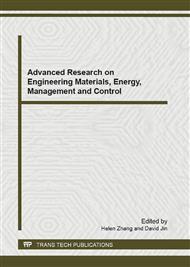p.535
p.540
p.545
p.551
p.555
p.560
p.564
p.568
p.573
Analysis of Heat Exchange Efficiency during the Spray Cooling Process
Abstract:
During the Spray cooling process in hot mine, the heat exchange efficiency of the liquid drop with the air is the key theoretical question. This article got the same enthalpy difference ratio expression with the first heat exchange efficiency in form when leaving the speed of horizontal direction out of account. The change discipline of heat exchange efficiency along with the initial speed and the diameter of the liquid drop was analyzed. The results showed that: the heat exchange efficiency is inversely proportional to the initial speed and the diameter of the liquid drop. Compared with the initial speed of the liquid drop, the diameter of the liquid drop has deeper influence to heat exchange efficiency. Meanwhile, when the diameter of the liquid drop is less than the critical value, its influence to the heat exchange efficiency would be reduced obviously.
Info:
Periodical:
Pages:
555-559
Citation:
Online since:
January 2012
Authors:
Keywords:
Price:
Сopyright:
© 2012 Trans Tech Publications Ltd. All Rights Reserved
Share:
Citation:


